MIBS 2024: Simrad NSX ULTRAWIDE
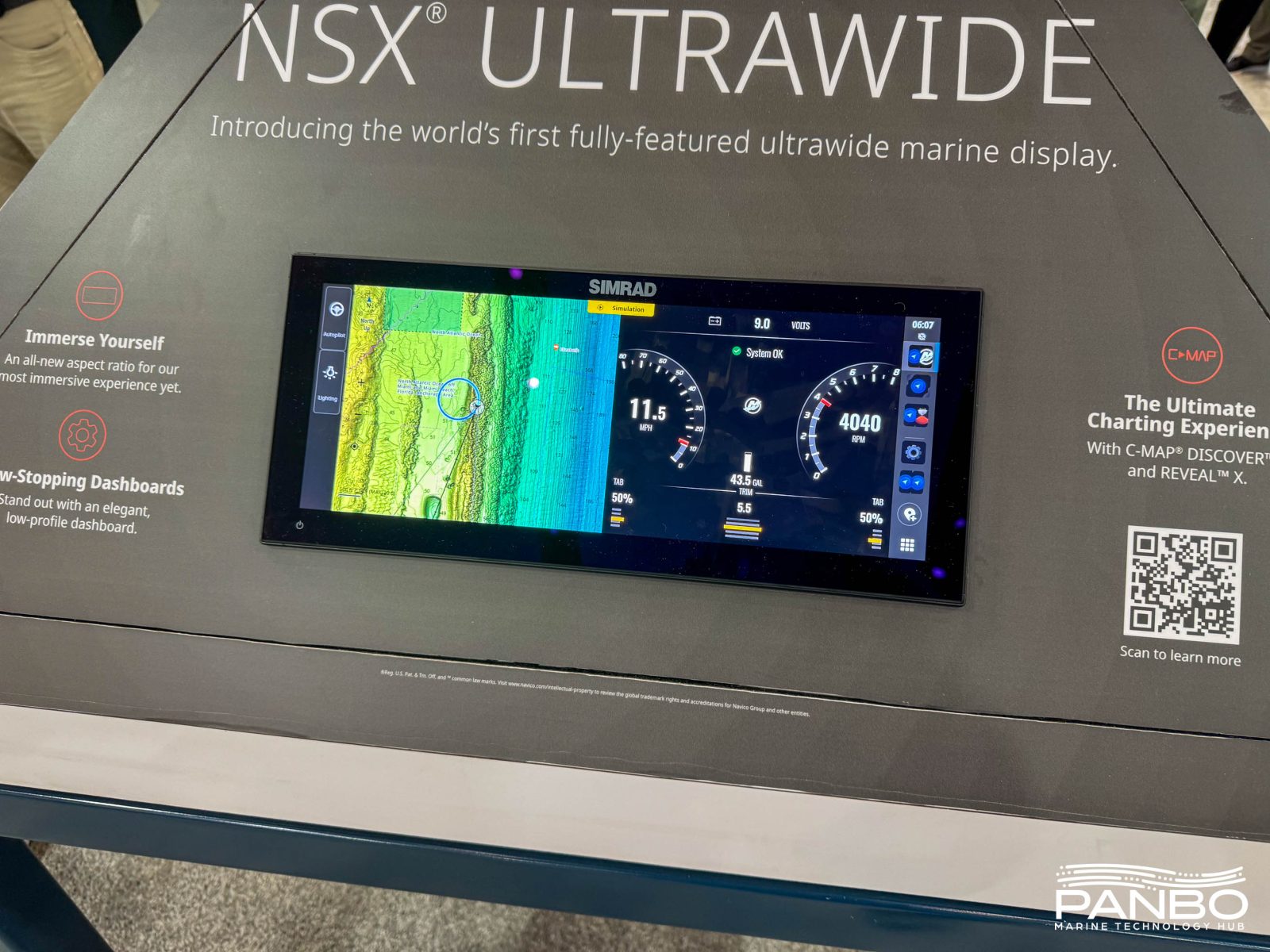
Shortly before the 2024 Miami International Boat Show, Simrad announced the NSX ULTRAWIDE multi-function device. My first reaction when I saw it was that Simrad was joining other ultrawide displays already in the market. But, when I stopped to think about it, I realized they are the first to introduce an ultrawide MFD to the marine marketplace. It seemed like such a logical next step that I thought someone must have done it already. So, I believe Simrad deserves credit for being the first and keeping pace with broader trends.
As color LCDs have become more ubiquitous, we have also seen a break from the 4:3 and 16:9 displays that mimic the typical ratios of television sets and computer monitors. Automobile dashboards, gaming computer monitors, and other displays have broken the mold of just a few display form factors. But, until now, we haven’t seen anything but the familiar displays in chart plotters or MFDs.
The NSX ULTRAWIDE is, not surprisingly based on the same, an ultrawide screen version of Simrad’s NSX MFD.During their launch press conference at the Miami show, Simrad said they don’t expect to be the only manufacturer offering ultrawide displays. In fact, they pointed to those aforementioned automotive displays as a leading indicator of what we will see in the marine space. Indeed, shortly after Simrad’s prediction, I found myself at an event for the new HCB Campeon, where an ultrawide form factor touchscreen is mounted atop the helm, providing control of the boat’s switching, climate control, and other functions.
The hardware
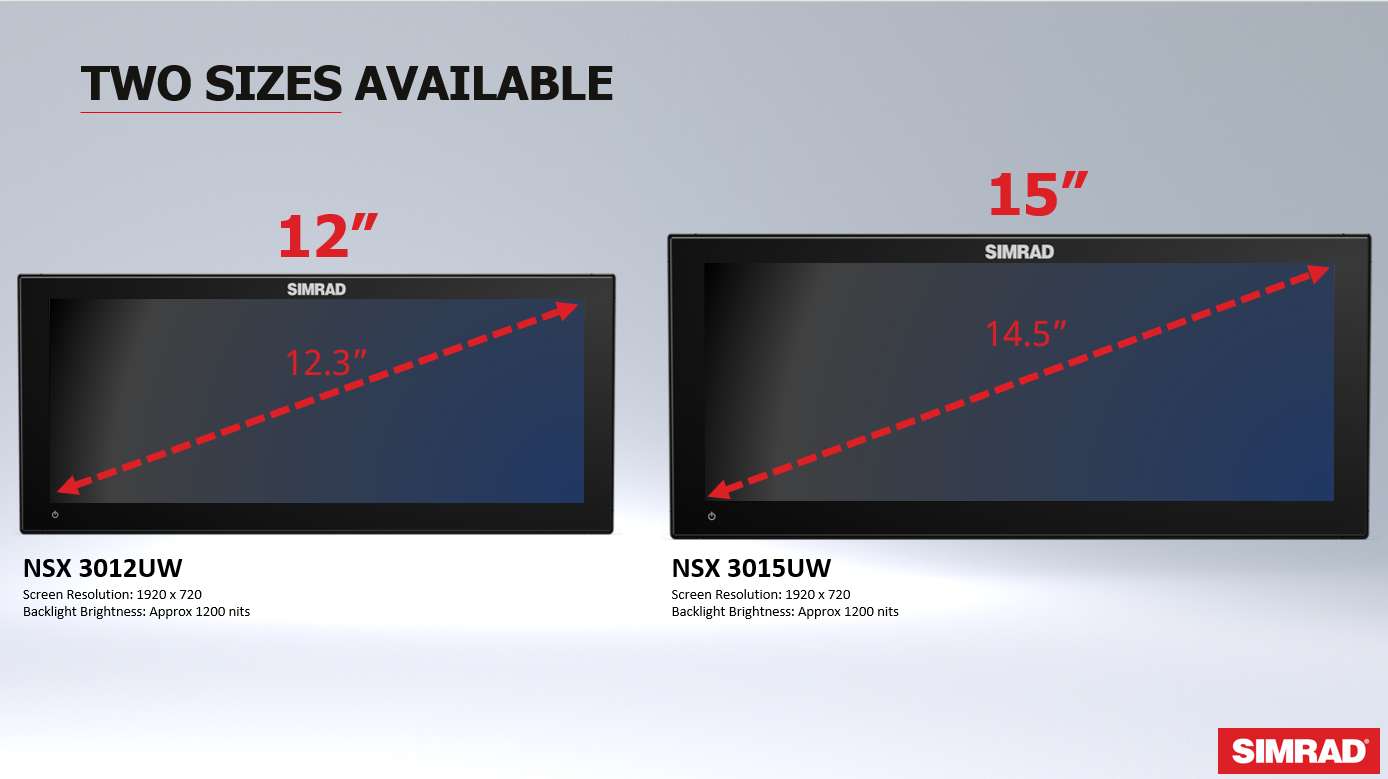
NSX ULTRAWIDEs are available in 12 and 15-inch screen sizes. Both screen sizes share a 1920 by 720 pixel resolution, making for an 8:3 screen ratio. The 12-inch NSX has an 8:5 ratio, and the 9-inch model has a 16:9 screen ratio. The 12-inch ultrawide is about the same height as a 9-inch NSX and the 15-inch ultrawide is a bit shorter than a 12-inch NSX.
But, both of the ultrawide displays are dramatically wider than their more traditional form-factor siblings. In fact, once you’ve accounted for the databar on the right side of the screen, there’s close to double the horizontal resolution available, so side-by-side splits display nearly two full apps.
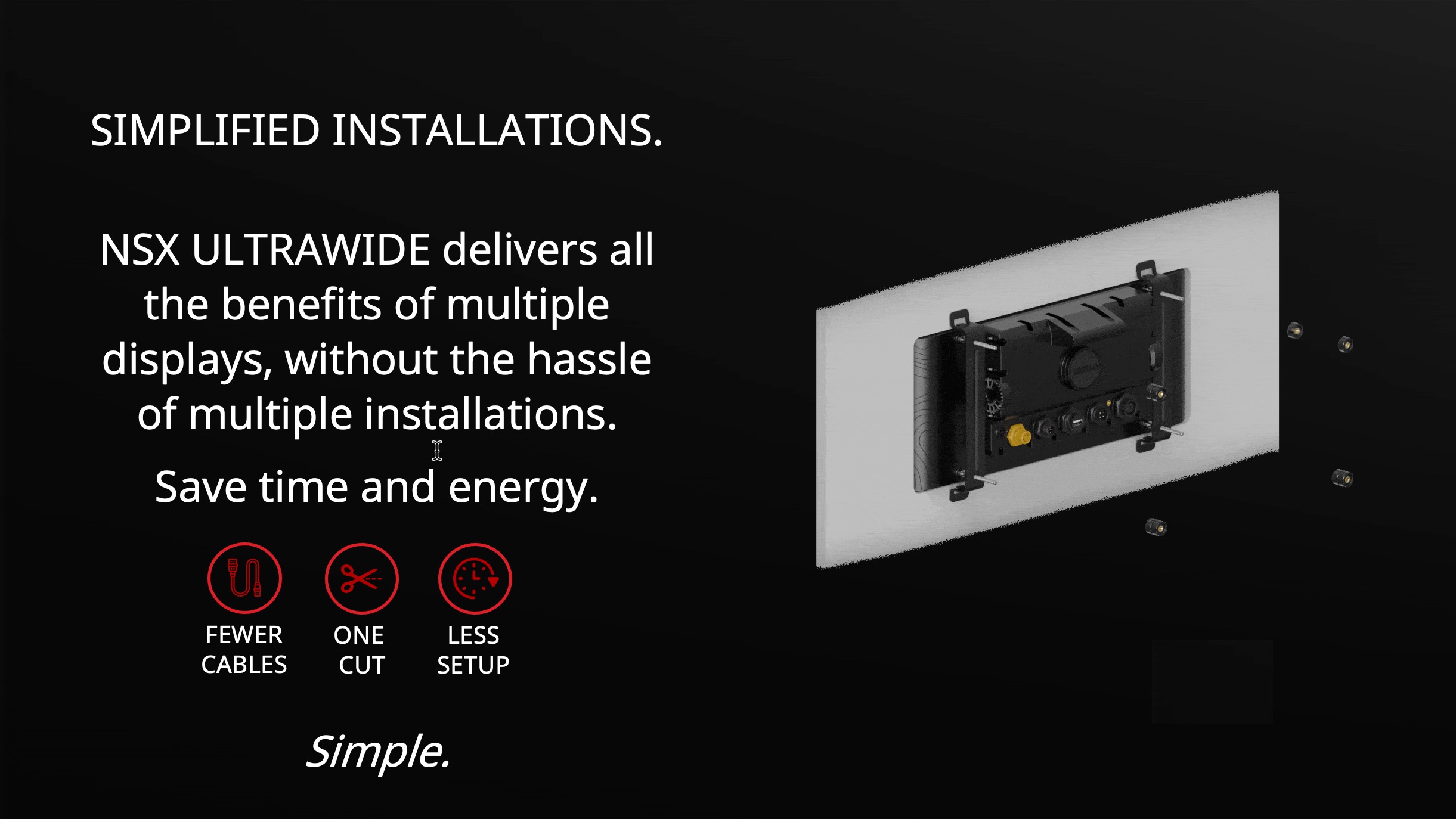
Beyond the obvious change to the screen size and shape, the NSX ULTRAWIDE is an NSX through and through. It has the same connectivity, same processor, and same MicroSD card slot. In fact, from the rear view, you can see the electronics are contained in a standard form factor NSX-sized hump on the back of the display.
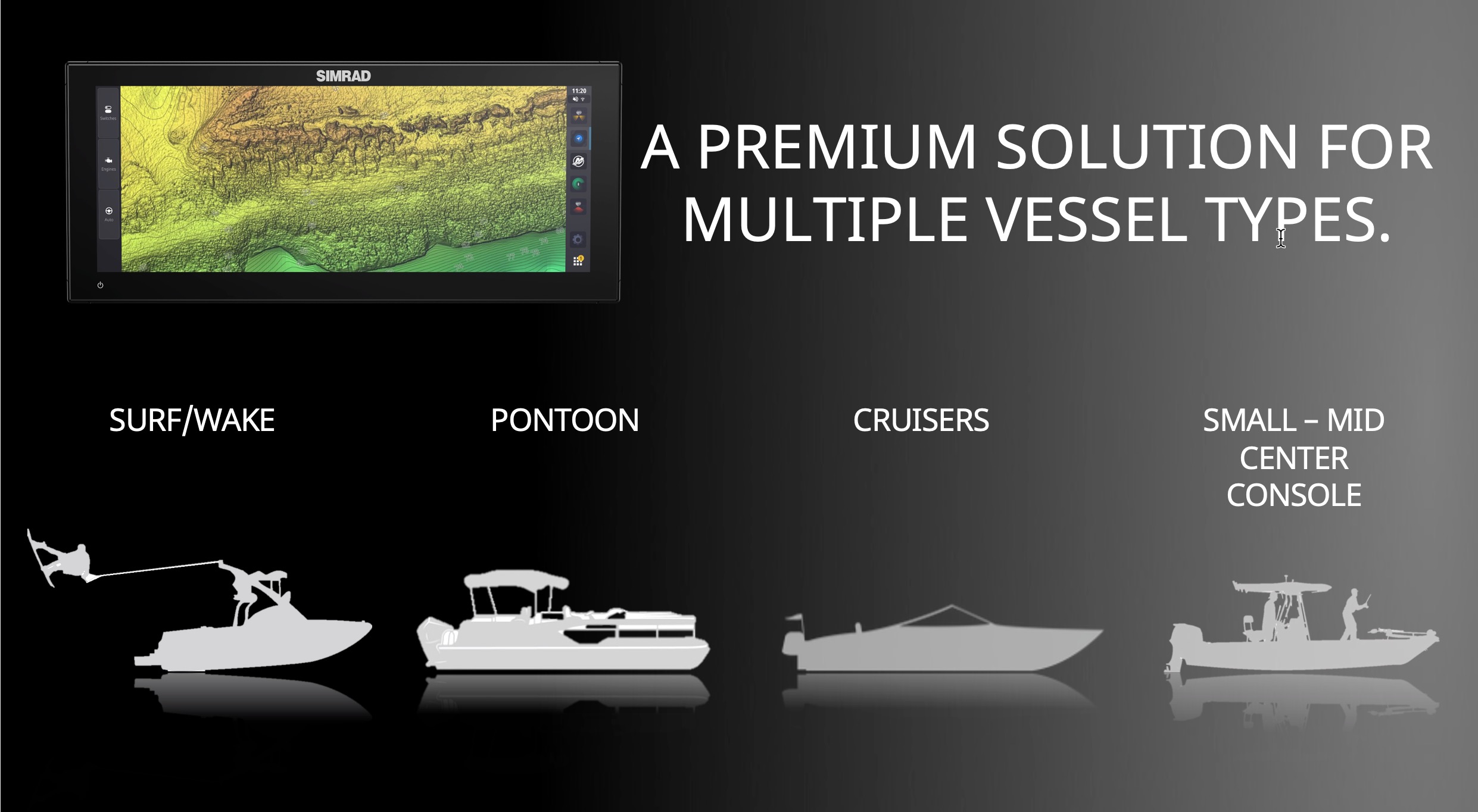
The NSX Ultrawide serves the same entry to midlevel portion of the market as the NSX. The displays have limited networking capabilities intended for use primarily on single helm boats with one or two MFDs. The NSX ULTRAWIDE will likely reduce the number of MFDs installed at a single helm, so the networking limitations may be less of an issue.
The software
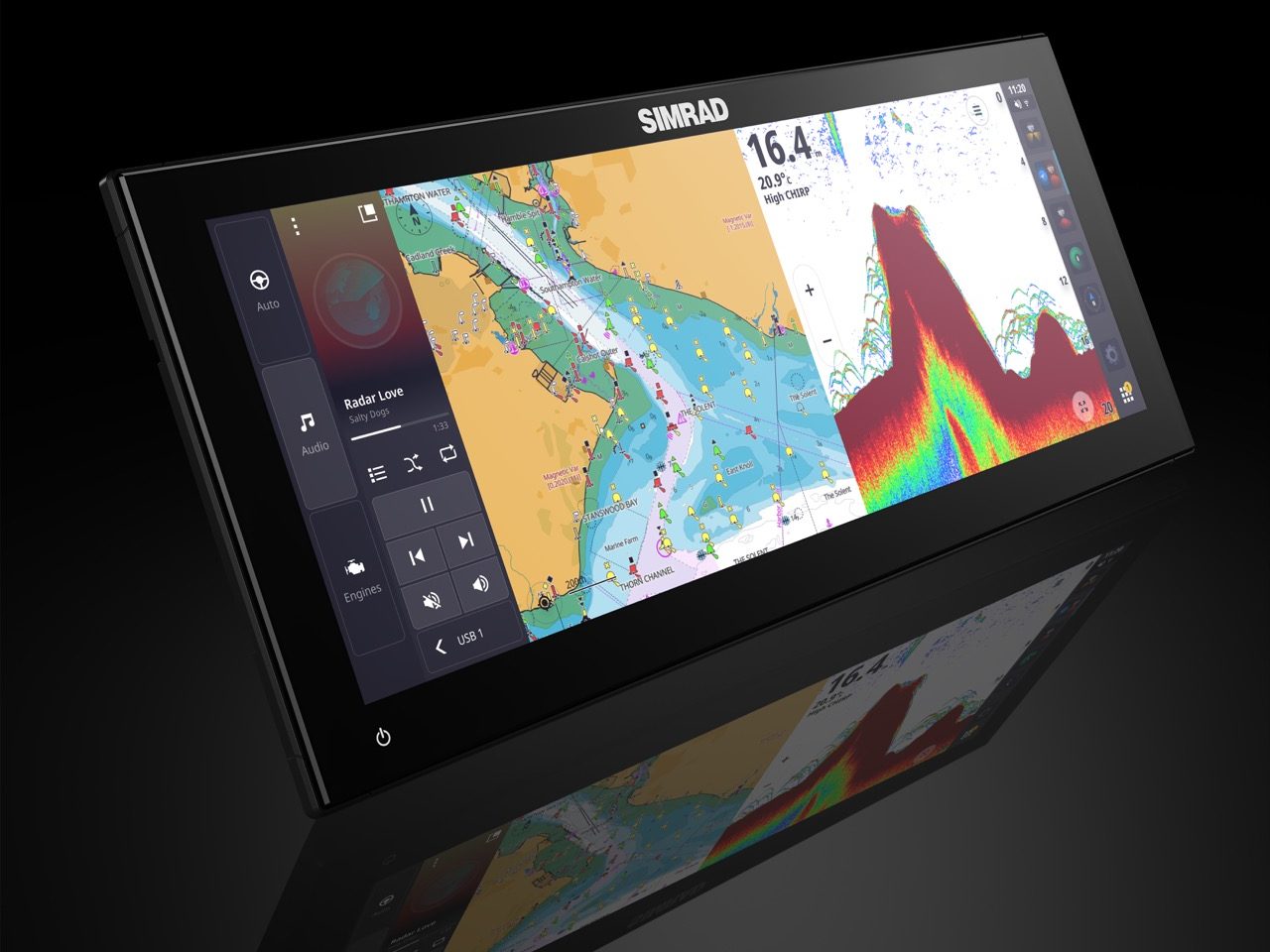
You may recall that NSX is the first Simrad MFD to run NEON, Navico’s new operating system. NSX ULTRAWIDEs also run NEON. I believe that now means the B&G Nemesis, B&G Zeus S, Simrad NSX, and Simrad NSX Ultrawide represent Navico’s NEON product offering. I expected that by now, we would see MFDs running the new operating system replace higher-end models. But that hasn’t happened yet, which I suspect may indicate how difficult it is to replace the software underpinning modern MFDs and chart plotters. Also, I recently learned that Navico plans to de-emphasize NEON as a public facing designation. Instead, they plan to simply refer to the software as their new operating system.
Simrad says NSX and NSX ULTRAWIDEs share the same version of the operating system. They explained that minimal adaptation was required for the new screen ratio. I suspect this is one of the ways the move to Android is paying off for Navico. Because Android already supports so many screen sizes and shapes, supporting the new displays is straightforward.
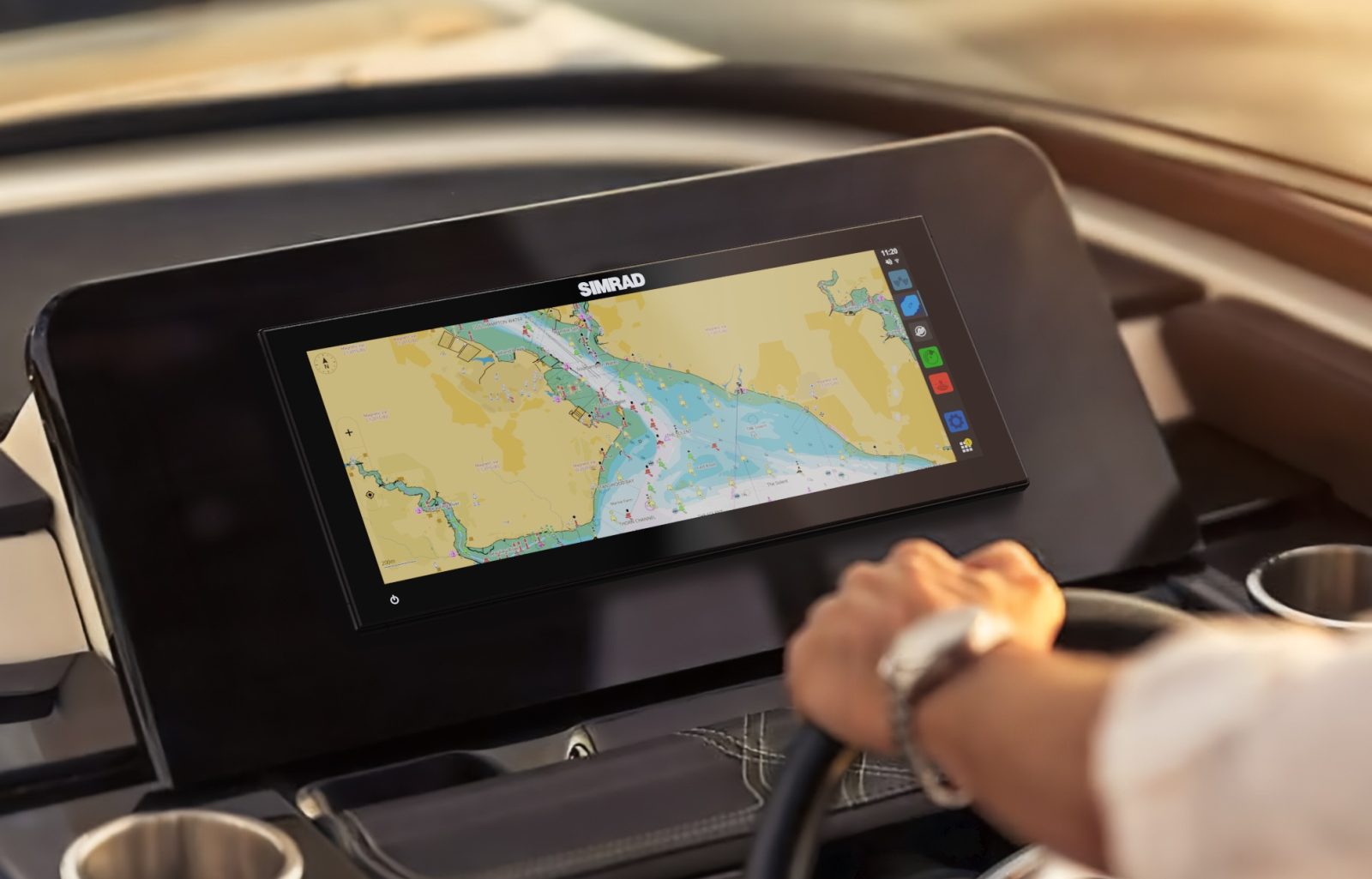
Single functions displayed full screen gain significantly more horizontal screen real estate than on a traditional NSX. For some functions, like charts and sonar tapes, this can be a real benefit. But, to my eye, other apps, like radar and camera views, benefit less and make more sense in split-screen layouts. Simrad didn’t show any vertically split views, and I’d guess those will be limited practical.
Pricing and availability
The 12-inch Simrad NSX ULTRAWIDE has a list price of $2,899, and the 15-inch model lists for $3,549. Both sizes include C-Map Discover-X charts and an Active Imaging 3-in-1 transducer. ULTRAWIDE 15-inch units are already shipping to boat builders, and Simrad expects they will be available in stores within a few weeks. The 12-inch model should be available a little later this spring.


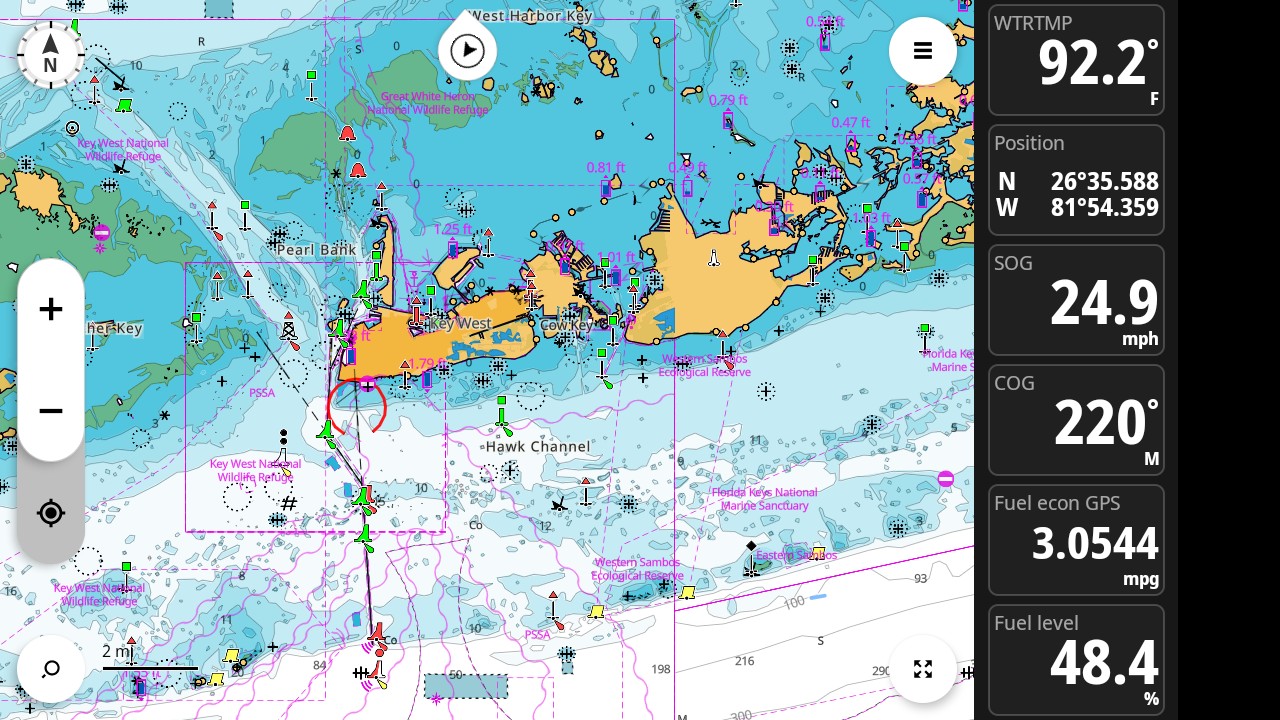

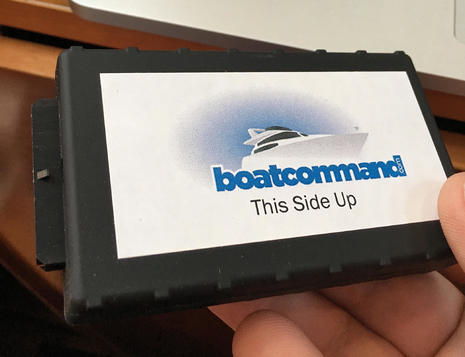









Not an MFD, but Oceanic Systems offers an ultra-ultrawide — as in 19″ diagonal screen, 1920 x 360 pixels, and frame 20″ wide x 5″high! — Multiple Engine Display:
https://osukl.com/product/vessel-multiple-engine-display/
It would make for a remarkably sleek and low-profile helm design if, say, mounted close underneath a pair of NSX-3012uw’s (that would frame out at about 27″ wide and 6″ high), which seems a main purpose of these super wide displays.
I’m rather excited for this. And hopefully others coming !
Not an MFD either but Nottrot has been offering an ultrawide display for a while now: https://www.nottrot.com/en/products/n-line-maritime-n123kg
Great to see a push for new innovation within the marketplace. The product looks fantastic.
Given that the displays are now widely available at reasonable prices they seem to be a logical step to some. I think that’s the wrong track and a helpless exercise to stay in business medium terms.
Just look at what ORCA is doing. I assume they work with a kernel stripped from an ECDIS supplier. Then think what they do with respect to integration (all devices incl radar), accessibility (use n2k but move to one net), data (charting will be available in S-57/100 cutting out the services provided by the current chart supply through the hardware suppliers) renders all what’s left to the display manufacturing and again ORCA allows you to either use any tablet or gives you a dedicated water proof unit. And, I would reckon they collect user data as much as possible to feed a KI to improve autorouting (better call it predictability).
Hence an ultrawide display may look great but what does it really offer?